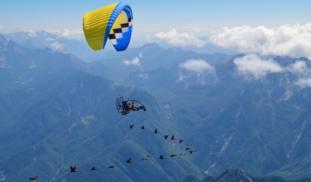Please wait...
About This Project
Migrating is strenuous for birds. Therefore, they need to find energy-saving strategies, such as flying in a V-formation. In a V-formation, birds take advantage of the up-wash produced by the preceding bird. Yet, the trailing bird does not get any benefit, hence birds switch their positions inside the flight formation. I hypothesize that every individual contributes to the flying effort and hence there is a pattern in the switches, which may be also affected by social relationships.

Browse Other Projects on Experiment
Related Projects
How do polar bears stay healthy on the world's worst diet?
Polar bears survive almost entirely on seal fat. Yet unlike humans who eat high-fat diets, polar bears never...
Uncovering hidden insect diversity associated with a likely undescribed gall-forming midge
Does a likely undescribed species of gall-forming midge (pers. comm. Ray Gagné) on Eriodictyon plants (Yerba...
Macrofungi of the California archipelago
The eight islands of the California Archipelago are a well-studied biodiversity hotspot — but we know almost...



